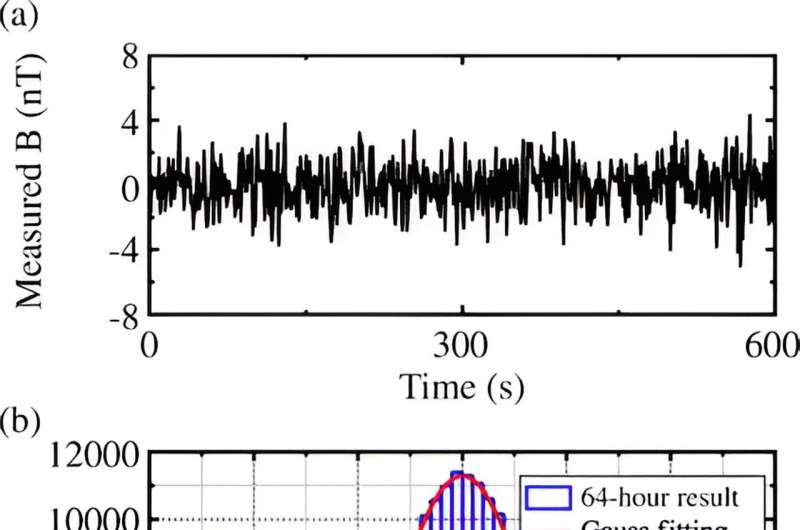This article has been reviewed according to Science X's editorial process and policies. Editors have highlighted the following attributes while ensuring the content's credibility:
fact-checked
peer-reviewed publication
proofread
Exploring exotic spin interactions at microscale using solid-state spin quantum sensors

A team of researchers led by Academician DU Jiangfeng from the University of Science and Technology of China (USTC) of the Chinese Academy of Sciences (CAS) has made a significant breakthrough in exploring exotic spin interactions. They successfully utilized solid-state spin quantum sensors based on nitrogen-vacancy (NV) centers in diamond to investigate these interactions at the microscale.
Their research findings were published in National Science Review, Physical Review Letters, and Proceedings of the National Academy of Sciences(PNAS), respectively. Those findings provide valuable insights and experimental constraints on these interactions.
Experimental searches for exotic spin interactions induced by new bosons have become a recent focus, as they hold the potential to address fundamental questions beyond the standard model. By employing diamond NV centers as quantum sensors, the team innovatively constructed high-sensitivity detectors capable of investigating spin interactions between electrons and nuclei. Their pioneering work extended the range of experimental searches to sub-micrometer scales, allowing for precise measurements of various spin phenomena.
To enhance the sensors' capabilities, the team realized the electron spin growth process of a high-quality diamond NV ensemble, upgrading the single-spin detector to an ensemble spin sensor. This advancement significantly improved the detection accuracy and realized experimental searches for exotic spin interactions.
In addition, the team leveraged the advantages of single NV centers as atomic-scale sensors and combined microelectromechanical systems (MEMS) technology with silicon-based nanofabrication. This led to the creation of a scalable spin-mechanical quantum chip, improving observation constraints by two orders of magnitude at distances smaller than 100 nanometers.
The achievements demonstrate the unique advantages of using solid-state spin quantum sensors for studying physics beyond the standard model, which can inspire widespread interest in multiple fundamental sciences, including cosmology, astrophysics, and high-energy physics.
More information: Diguang Wu et al, Improved Limits on an Exotic Spin- and Velocity-Dependent Interaction at the Micrometer Scale with an Ensemble-NV-Diamond Magnetometer, Physical Review Letters (2023). DOI: 10.1103/PhysRevLett.131.071801
Longhao Wu et al, A spin-mechanical quantum chip for exploring exotic interactions, Proceedings of the National Academy of Sciences (2023). DOI: 10.1073/pnas.2302145120
Hang Liang et al, New constraints on exotic spin-dependent interactions with an ensemble-NV-diamond magnetometer, National Science Review (2022). DOI: 10.1093/nsr/nwac262
Journal information: Physical Review Letters , Proceedings of the National Academy of Sciences
Provided by University of Science and Technology of China


















